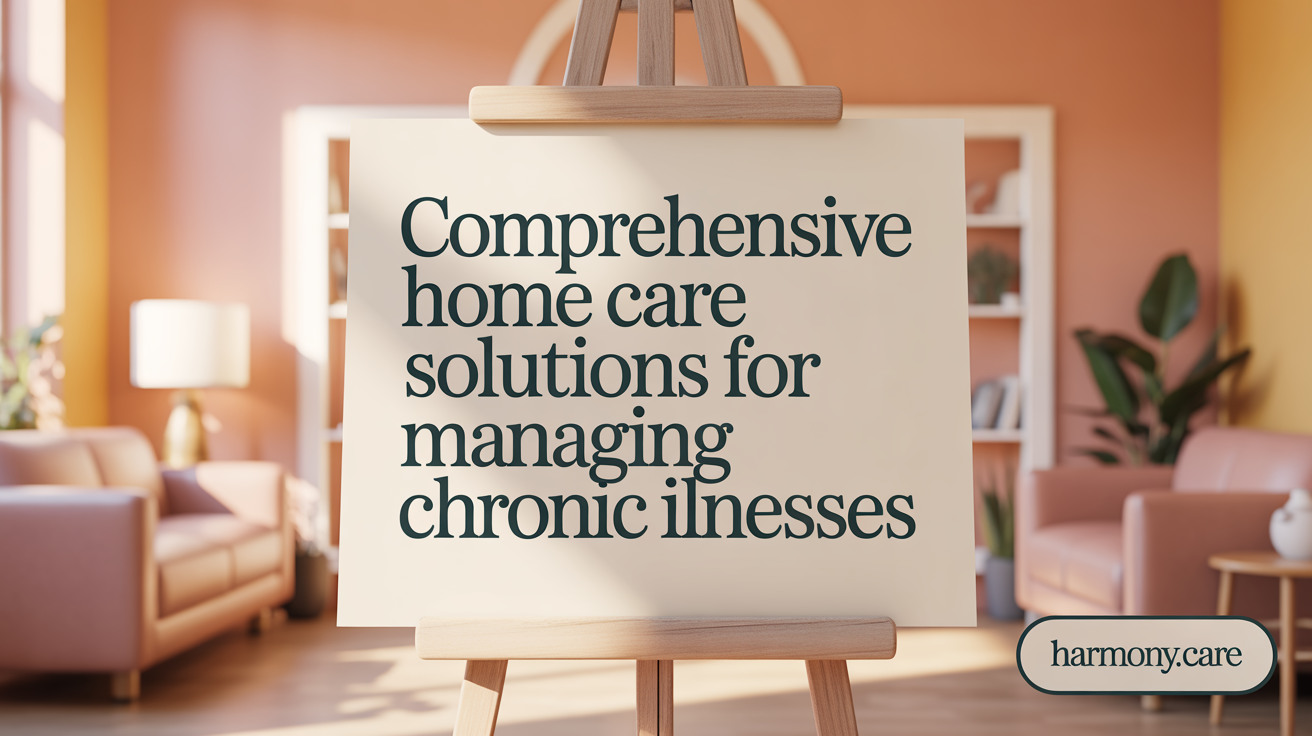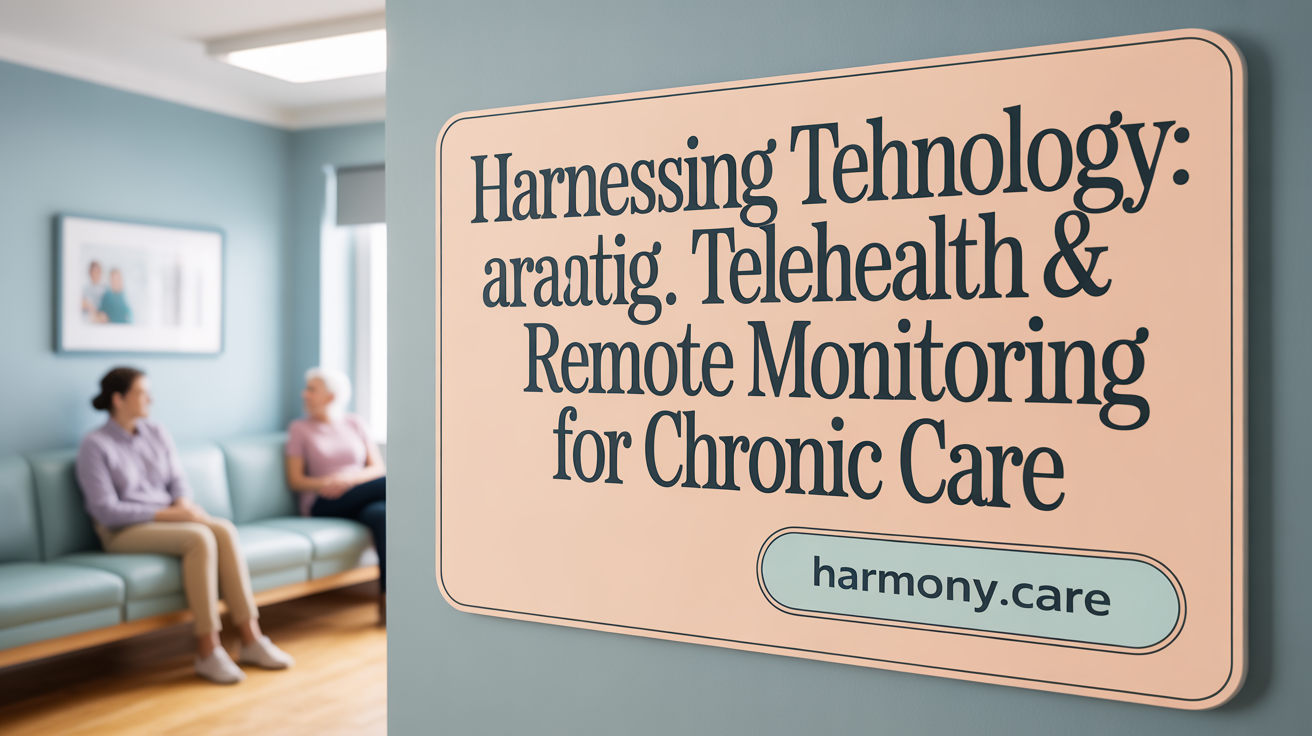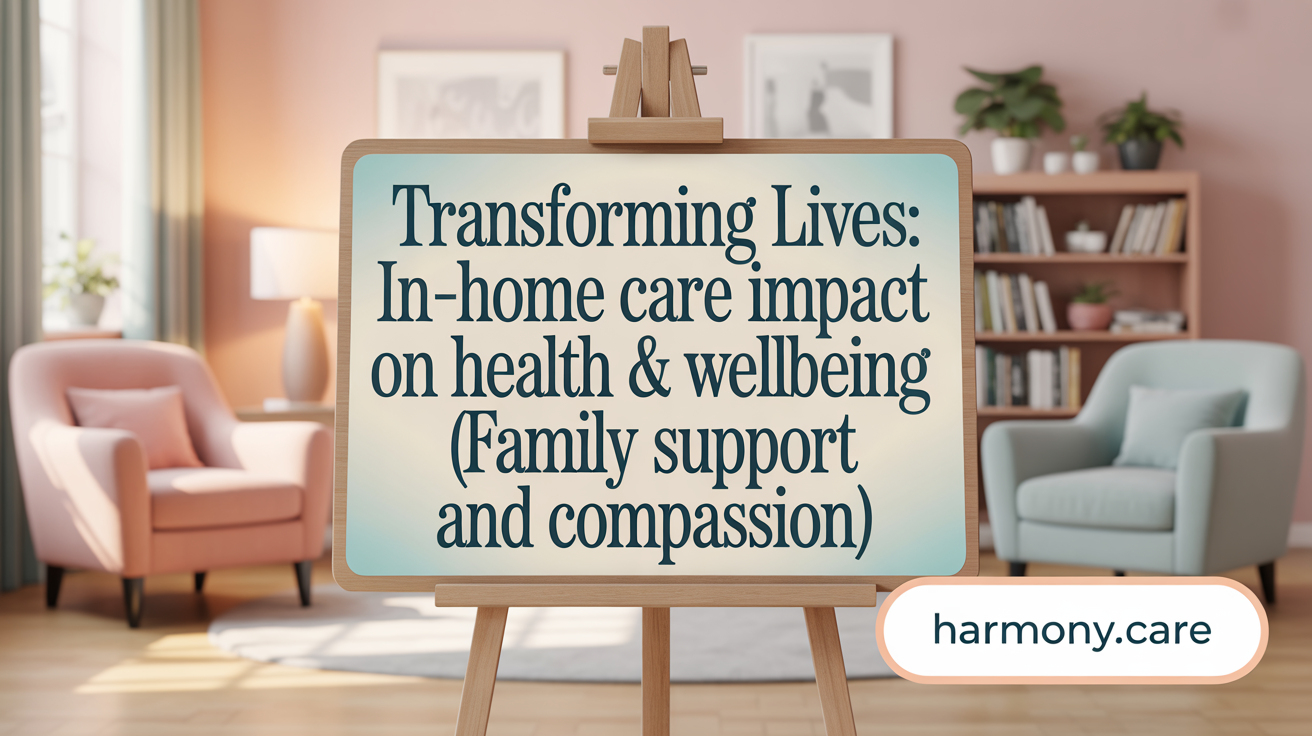The Growing Need for Effective Chronic Disease Management at Home
Chronic diseases affect millions worldwide, demanding ongoing care and lifestyle adjustments to maintain quality of life. Managing these conditions through in-home visits offers a personalized, holistic approach that reduces hospital visits, improves health outcomes, and empowers patients. This article explores how in-home care, enriched by technology and coordinated support, transforms chronic disease management into a patient-centered experience.
Foundations of Chronic Disease Management in the Home Setting

What are the foundational principles of chronic disease management?
Managing chronic diseases effectively at home revolves around several core principles. First, controlling the condition by regularly monitoring vital health indicators such as blood glucose for diabetics, blood pressure for hypertensive patients, and other relevant metrics like weight or oxygen saturation is vital. Consistent tracking helps detect early signs of deterioration and prevents complications.
Second, patient adherence to prescribed treatment plans—including medication schedules, diet, exercise, and lifestyle changes—is fundamental. Education empowers patients to understand their condition and encourages active participation in their health.
Third, structured care systems, like clinical reminder and information systems, provide consistency in screening, medication management, and follow-up routines. These tools help healthcare professionals deliver timely interventions.
Another essential element is patient education. Programs should focus on teaching individuals self-management skills, covering proper medication use, nutritional guidance, physical activity tailored to personal abilities, and stress management.
Finally, adopting the '5Cs' approach significantly enhances clinical encounters. The 5Cs stand for Control, Compliance, Complications, Counseling, and Customization. Control emphasizes keeping the illness within target ranges; Compliance stresses adherence to treatment; recognizing and managing potential Complications early; providing Counseling to support mental and emotional well-being; and Customization to tailor care plans to individual needs.
Leveraging community resources—such as support groups, local health programs, and social services—further complements clinical efforts. These external supports address social determinants of health, foster social engagement, and facilitate holistic, person-centered care that is crucial for managing chronic illnesses successfully in a home environment.
Key Lifestyle and Health Strategies for Managing Chronic Conditions at Home
What are key lifestyle and health strategies recommended to manage chronic diseases?
Managing chronic health conditions such as heart disease, diabetes, COPD, and arthritis requires comprehensive lifestyle strategies that focus on controlling risk factors. Regular monitoring of vital signs, blood glucose, and blood pressure helps in early detection of complications. Adherence to prescribed medications is vital, supported by tools like pill organizers and reminders.
Engaging in physical activity tailored to individual capabilities is highly recommended. Current guidelines suggest at least 150 minutes of moderate-intensity aerobic activity each week, along with muscle-strengthening exercises twice a week. Physical activity helps control weight, reduce stiffness, and improve cardiovascular health.
Dietary habits also play a crucial role. Consuming a balanced diet low in sodium, processed foods, and added sugars can significantly impact disease management. Following specific dietary guidelines, such as the Dietary Guidelines for Americans, and using tools like food diaries helps in making informed choices.
Lifestyle modifications like smoking cessation and moderation of alcohol consumption are essential for reducing disease progression and improving overall health. Support from healthcare providers and community programs enhances patients' ability to make these sustained changes.
During public health crises like the COVID-19 pandemic, virtual care—such as telehealth consultations and remote self-monitoring—has become an important part of ongoing management. These services allow for continuous physician communication, medication adjustments, and health education.
Furthermore, community involvement, patient education programs, and proactive physician outreach contribute to maintaining motivation and adherence to healthy habits. Combining these strategies can help individuals with chronic diseases lead healthier lives, reduce hospitalizations, and improve quality of life.
In-Home Care Services and Programs for Chronic Disease Management

Skilled Nursing and Specialized Chronic Care Programs
Home-based care often includes skilled nursing services, offering wound care, medication management, and vital signs monitoring, which are essential for managing complex conditions like heart failure or COPD. Programs such as Aurora Health's Helping Hearts at Home and rapid recovery initiatives provide tailored interventions focusing on disease-specific needs. These programs incorporate patient education, lifestyle modifications, and regular assessments to prevent hospitalizations and improve quality of life.
Telehealth and Education in Chronic Disease Management
Telehealth plays a vital role in managing chronic illnesses by enabling virtual consultations, routine check-ins, and asynchronous communication. Patients can report symptoms, review test results, and receive guidance without leaving home. Educational initiatives, delivered through nurse visits and telehealth platforms, help patients recognize symptom changes, manage medication schedules, and adopt healthy behaviors, fostering independence and confidence.
Medication Management
Proper medication adherence is fundamental. Home care teams assist with organizing pills, reminding patients to take medications timely, and monitoring for side effects. This personalized oversight decreases the risk of adverse reactions and ensures treatment effectiveness, especially for those with mobility challenges or cognitive impairments.
Therapy Services
Home therapy services encompass physical, occupational, and speech therapy aimed at maintaining or regaining functional independence. These therapies address physical limitations, improve mobility, and support recovery from surgeries or neurological conditions like stroke or Parkinson's disease.
Monitoring Vital Signs
Continuous monitoring of vital signs such as blood pressure, heart rate, weight, and oxygen saturation allows early detection of clinical deterioration. Advanced remote monitoring devices and wearable technologies enable real-time assessments, making it easier to intervene promptly and reduce hospitalization risks.
Disease-Specific Interventions
Home programs include tailored strategies for conditions like diabetes, heart failure, COPD, and dementia. For example, diabetes management involves blood sugar monitoring and dietary counseling, while heart failure programs focus on fluid intake, medication compliance, and symptom tracking. These targeted interventions help control disease progression, enhance daily functioning, and improve overall health outcomes.
| Service Area | Interventions | Benefits | Additional Details |
|---|---|---|---|
| Skilled Nursing | Wound care, medication oversight | Prevent infections, improve adherence | Delivered by licensed nurses during home visits |
| Chronic Care Programs | Disease-specific management, patient education | Reduce hospitalizations, support independence | Custom plans based on patient condition |
| Telehealth & Education | Virtual visits, symptom reporting tools | Continuous monitoring, patient empowerment | 24/7 access and asynchronous communication |
| Therapy Services | Physical, occupational, speech therapy | Restore or maintain function | Rehabilitative care tailored to individual needs |
| Vital Signs Monitoring | Wearables, remote devices | Detect early deterioration | Data shared with healthcare team for swift action |
Home health care services are transforming chronic disease management by offering personalized, accessible, and often more cost-effective solutions. Integrating skilled nursing, advanced monitoring, and patient education ensures comprehensive care at home, ultimately improving health outcomes and quality of life.
The Role of Technology: Telehealth and Remote Monitoring in At-Home Care

How can telehealth be used effectively for managing chronic diseases?
Telehealth plays an increasingly vital role in enabling effective at-home management of chronic conditions. It facilitates regular virtual consultations, allowing healthcare providers to monitor patients closely without the need for frequent in-person visits. This ongoing contact is especially beneficial for managing diseases like diabetes, hypertension, asthma, and cardiovascular issues.
Remote patient monitoring devices further enhance this approach by continuously tracking vital signs such as blood pressure, heart rate, blood glucose, oxygen levels, and weight. These real-time data streams enable early detection of emerging problems and allow providers to make timely adjustments to treatment plans, potentially preventing hospitalizations.
In addition, telehealth incorporates educational components, where healthcare professionals can teach patients about symptom management, medication adherence, and healthy lifestyle practices. The integration of asynchronous tools—such as sharing lab results, symptom logs, and images—also supports efficient communication.
This technology-rich model promotes better adherence to therapy, improves patient engagement, and enhances overall health outcomes. Particularly for individuals in rural or underserved areas, telehealth offers access to specialists and resources otherwise difficult to reach.
By combining virtual consultations with remote monitoring and educational support, healthcare providers can offer personalized, continuous care that reduces the need for emergency interventions and hospital stays. Overall, telehealth significantly advances chronic disease management from a reactive to a proactive approach, improving quality of life for at-home patients.
Strategies and Approaches for Effective At-Home Management of Chronic Illnesses
Personalized Care Plans
Creating a tailored care plan is vital for managing chronic diseases effectively at home. Healthcare professionals assess each patient's specific health needs, medical history, and living environment to develop individualized strategies. These plans typically include medication schedules, dietary guidelines, physical activity routines, and symptom management techniques. Personalized plans not only promote better health outcomes but also enhance patient engagement and confidence in self-care.
Regular Health Assessments
Consistent monitoring through scheduled visits and remote check-ins helps detect any changes in health status early. Home visits by nurses, occupational therapists, or physicians facilitate ongoing assessments of vital signs, wound healing, medication adherence, and functional abilities. Early identification of health issues allows for prompt intervention, reducing the risk of hospitalizations and complications.
Environmental and Task Modifications
Adjusting the home environment to support safety and independence is crucial. This includes installing grab bars, ramps, and removing tripping hazards. Task modifications, such as simplified medication administration or easier-to-handle household chores, help patients manage daily activities comfortably. Such changes can prevent falls, reduce injury risks, and promote confidence in maintaining independence.
Case Management
Effective case management involves a dedicated healthcare team coordinating various aspects of a patient's care. This team, often led by a nurse or care manager, oversees medication management, health education, and scheduling of services like physical therapy or social support. Case managers serve as a central point for communication between the patient, family, and healthcare providers, ensuring seamless care delivery.
Care Coordination
Integrated care approaches help synchronize services across different providers, including specialists, primary care, and home health agencies. Through continuous communication and shared care plans, this coordination ensures all team members are aligned in treatment goals. It enhances treatment adherence, reduces redundancies, and facilitates swift responses to health changes.
Early Complication Detection
Using remote monitoring devices—such as wearable sensors and home-based vital sign monitors—patients and providers can track health indicators like blood pressure, blood glucose, and oxygen saturation regularly. This proactive approach allows for the early detection of potential issues such as infections, medication side effects, or symptom exacerbations. Early intervention can prevent worsening conditions, hospital admissions, and improve overall quality of life.
| Strategy | Implementation Methods | Benefits |
|---|---|---|
| Personalized Care Plans | Assessments, customized schedules, patient education | Better adherence, improved outcomes |
| Regular Health Assessments | Home visits, telehealth check-ins | Early problem detection, timely treatment |
| Environmental & Task Mods | Safety installations, task simplifications | Fall prevention, independence support |
| Case Management | Care coordinators, ongoing communication | Consistent care, reduced fragmentation |
| Care Coordination | Shared electronic health records, team meetings | Reduced errors, holistic treatment |
| Early Complication Detection | Remote vital sign monitoring, wearable devices | Prevents escalation, hospital avoidance |
Implementing these integrated strategies can significantly enhance the management of chronic illnesses at home, fostering safer, more comfortable, and more effective care for patients.
Support Systems and Patient Empowerment Through In-Home Healthcare

How Do Patient Education Programs Facilitate Chronic Disease Management?
Educational initiatives are vital in enabling patients to actively participate in managing their health. In-home care services often include personalized education about conditions, medication adherence, symptom recognition, and lifestyle modifications. These programs use nurse visits and telehealth platforms to teach patients how to monitor vital signs, understand warning signs, and make informed decisions about their care.
Why Is Emotional and Social Well-Being Support Important?
Chronic illnesses can lead to feelings of isolation and emotional stress. Home health providers include emotional support and social interaction as part of holistic care. Counseling, support groups, and companionship during visits help improve mental health, reduce feelings of loneliness, and foster a sense of independence and confidence.
What Role Does Caregiver Involvement Play?
Family members and informal caregivers are integral to successful in-home care. Caregivers assist with medication management, mobility, and daily activities, while healthcare professionals provide guidance and training. Strong caregiver involvement enhances communication, ensures adherence to treatment plans, and provides emotional support, ultimately improving health outcomes.
How Do Self-Management Models Support Patients?
Self-management programs emphasize education, symptom monitoring, and behavioral changes. Technologies like remote monitoring devices and apps empower patients to track their health data, recognize early signs of complications, and communicate effectively with healthcare teams. Models such as the WISE Self-Care Model focus on building skills for independent decision-making.
What Strategies Help Reduce Caregiver Burden?
Supporting caregivers through training, respite care, and access to resources is essential. Providing clear instructions, educational materials, and emotional support helps caregivers manage their responsibilities without burnout. Respite programs and professional guidance allow caregivers to recharge, ensuring sustained and effective patient care.
How Do Psychosocial and Mental Health Services Contribute?
Addressing mental health issues is a crucial component of managing chronic diseases. Home care services often include access to mental health professionals, therapy, and support groups. These services help patients cope with their conditions, reduce anxiety and depression, and enhance overall well-being, leading to better engagement in self-care activities.
Eligibility and Access: Navigating In-Home Chronic Care Services
What are the criteria for being considered homebound?
To qualify for many in-home care services, patients typically must be classified as homebound. This means they have difficulty leaving their home without considerable effort or assistance, often due to their health condition. This status helps ensure that the care is medically necessary and tailored for those with significant mobility or health challenges.
How are personalized care plans created?
Assessment by healthcare professionals forms the foundation of a personalized care plan. These evaluations consider the patient's medical history, current health status, living environment, and specific needs. Based on this, a tailored plan is developed to include medication management, symptom monitoring, education, and support services.
What insurance options are available for coverage?
| Insurance Type | Coverage Scope | Details |
|---|---|---|
| Medicare | Generally covers skilled nursing, therapy, and some home health aide services | Patients must meet certain criteria, like being homebound and needing intermittent skilled care |
| Private insurance | Varies with policy; some plans cover in-home services | Patients should review their policy for detailed coverage options |
| Medicaid | Offers comprehensive home-based care coverage in many states | Provides additional support for low-income individuals |
How do patients select a care provider?
Choosing a reputable provider involves checking credentials, reviews, and service offerings tailored to your health condition. It’s essential to select agencies licensed and certified to deliver in-home care, ensuring quality and safety.
How is care coordinated with other healthcare teams?
Effective integration involves regular communication among primary care physicians, specialists, home care staff, and family caregivers. Modern technology such as telehealth and remote monitoring devices facilitates ongoing collaboration, quick adjustments to care, and comprehensive management.
Is in-home IV therapy and palliative care accessible?
| Service Type | Description | Benefits |
|---|---|---|
| In-home IV therapy | Administered by trained nurses, including hydration, medication infusions, and chemotherapy | Reduces hospital visits, boosts comfort, and supports chronic disease management |
| Palliative care | Focuses on symptom relief, emotional support, and quality of life for serious illnesses | Available at home, ensuring patient comfort and personalized approaches |
Navigating these services involves understanding eligibility, coordinating with healthcare teams, and exploring coverage options. Access to comprehensive, personalized in-home care can significantly enhance managing chronic conditions, fostering independence and improved quality of life.
Impact of In-Home Care on Health Outcomes and Quality of Life

Reductions in Hospitalizations and Mortality
In-home care delivered by healthcare professionals, including nurses, has been shown to significantly improve patient outcomes for those with chronic heart conditions. Evidence indicates a roughly 12% decrease in the combined risk of all-cause deaths and hospital admissions, highlighting the effectiveness of personalized care plans and ongoing monitoring.
Improvements in Activities of Daily Living
Patients receiving in-home support often experience enhancements in their ability to perform daily activities. Skilled services focus on mobility, wound management, and assistance with routine tasks, which collectively boost independence and overall wellbeing.
Medication Adherence and Management
Adherence to medication regimens is crucial in managing chronic illnesses such as diabetes and heart failure. Home care providers assist with medication reminders, proper administration, and monitoring for adverse effects, ensuring treatment effectiveness and reducing hospital readmissions.
Emotional Support
Chronic conditions often impact mental health, leading to feelings of isolation or depression. Home care professionals and social workers offer emotional support, counseling, and resources that help patients cope better and improve their quality of life.
Mobility and Safety Enhancements
Falls and injuries are common concerns among older adults with mobility challenges. In-home assessments identify environmental hazards, and services such as mobility aids and fall prevention programs ensure safer living environments, contributing to reduced injury risks.
Cost-Effectiveness and Patient Satisfaction
Compared to extended hospital stays, in-home care proves to be more cost-effective without compromising care quality. Patients report high satisfaction levels due to personalized attention, familiarity of their environment, and the convenience of receiving care at home.
| Aspect | Benefits | Details |
|---|---|---|
| Hospitalizations & Mortality | 12% risk reduction | Continuous monitoring and timely intervention |
| Activities of Daily Living | Improved independence | Assistive devices, therapy services |
| Medication Management | Better adherence, reduced adverse effects | Reminders, education, medication review |
| Emotional Well-being | Reduced depression, better coping | Counseling, social interaction |
| Safety & Mobility | Fewer falls and injuries | Home safety assessments, mobility aids |
| Cost & Satisfaction | Cost savings, high patient contentment | Personalized care plans, home setting preference |
By integrating customized services such as education, therapy, and remote monitoring, in-home care continues to enhance both health outcomes and the overall quality of life for those managing chronic diseases.
Transforming Chronic Disease Management: The Future is Home-Based
In-home visits for chronic condition management represent a transformative healthcare approach prioritizing personalization, accessibility, and comprehensive support. Integrating skilled nursing, specialized programs, and advanced telehealth technologies enables patients to maintain independence, improve health outcomes, and reduce unnecessary hospital admissions. As the population ages and chronic disease prevalence grows, embracing and expanding in-home care services will be vital. This model fosters empowered patients, coordinated care teams, and healthier communities — all within the comfort of home.
References
- In-Home Care for Optimizing Chronic Disease Management in the ...
- Chronic Disease Management at Home | Aurora Health Care
- How Primary Care Home Visits Improve Chronic Disease ...
- Managing Chronic Conditions at Home: How Home Care Can Help
- Home-based therapy for chronic conditions
- Managing chronic conditions through telehealth
- Managing Chronic Illnesses with At-Home Medical Care
- How Home Health Helps Patients Manage Chronic Conditions
- In-Home Chronic Care Management Services
- Effective Home Management of Chronic Conditions
